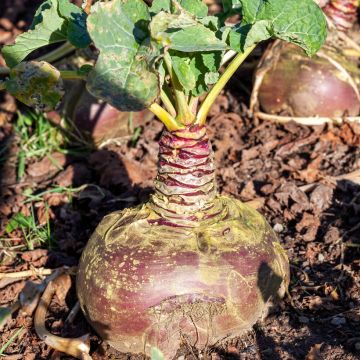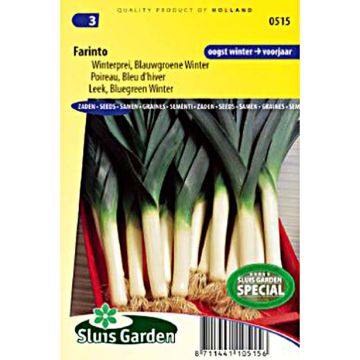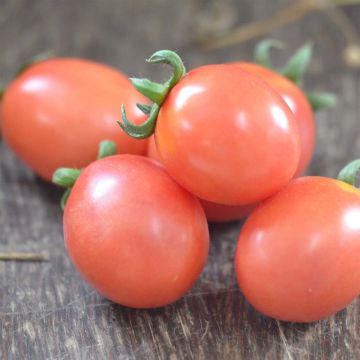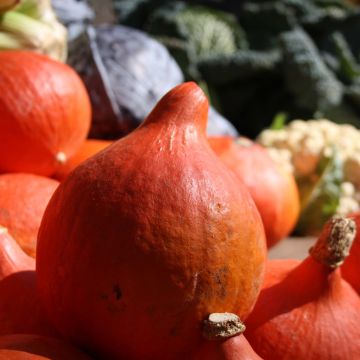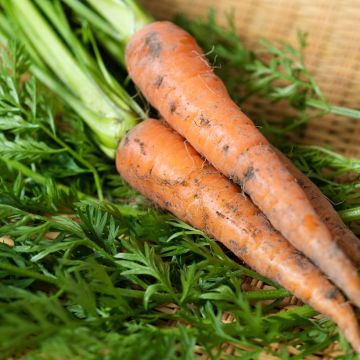Shipping country and language
Your country of residence may be:
Your country of residence is:
For a better user experience on our website, you can select:
Your shipping country:
-
Andorra
-
Austria
-
Belgium
-
Bulgaria
-
Canada
-
Chile
-
Croatia
-
Cyprus
-
Czechia
-
Denmark
-
Estonia
-
Finland
-
France
-
Germany
-
Greece
-
Hungary
-
Iceland
-
Ireland
-
Italy
-
Latvia
-
Lithuania
-
Luxembourg
-
Malta
-
Monaco
-
Netherlands
-
Poland
-
Portugal
-
Romania
-
Slovakia
-
Slovenia
-
Spain
-
Sweden
-
Switzerland
-
United Kingdom
We only deliver seed and bulb products to your country. If you add other products to your basket, they cannot be shipped.
Language:
-
French
-
German
-
Spanish
-
English
-
Italian
My Account
Hello
My wish lists
Log in / Register
Existing customer?
New customer?
Create an account to track your orders, access our customer service and, if you wish, make the most of our upcoming offers.


Champion Rapeseed (yellow with red collar) - Vilmorin seeds - Brassica napus


Champion Rapeseed (yellow with red collar) - Vilmorin seeds - Brassica napus
Champion Rapeseed (yellow with red collar) - Vilmorin seeds - Brassica napus
Brassica napus Champion
Rapeseed, Oilseed Rape, Canola
Why not try an alternative variety in stock?
View all →Order in the next for dispatch today!
Dispatch by letter from €3.90.
Delivery charge from €5.90 Oversize package delivery charge from €6.90.
More information
This item is not available in your country.
Schedule delivery date,
and select date in basket
This plant carries a 6 months recovery warranty
More information
We guarantee the quality of our plants for a full growing cycle, and will replace at our expense any plant that fails to recover under normal climatic and planting conditions.
Seed-only orders are dispatched by sealed envelope. The delivery charge for seed-only orders is €3.90.
Description
The 'Champion' Rutabaga is a variety that forms large tubercles with a red collar and yellow flesh, very fine. This rutabaga is hardy and exceptionally productive. It is a vegetable for autumn and winter, a bit forgotten, that is easily cultivated, a rediscovery! Sowing from May to June for a harvest from October to December.
The Rutabaga, also called Swede, Siamese Cabbage or Swedish Cabbage, is a root vegetable from Northern Europe that belongs to the large family of Brassicaceae. It results from cross-breeding between cabbage and turnip and bears the Latin name Brassica napus. It is grown as a vegetable or fodder plant, for the white or yellow root it forms, similar to turnips.
Kept away from our plates for decades because it reminded too much of war and its restrictions, this vegetable is easy to cultivate and thrives in cold and humid climates.
Its nutritional value is high, and its flavour is similar to that of potatoes and radishes. It is generally consumed cooked in soups, mashed, gratin, and even caramelised fries. Raw and grated, it can be used in salads with carrots. From a dietary point of view, the Rutabaga is very interesting: it is pretty calorie-rich and contains a lot of potassium, calcium, and phosphorus. It is known to be digestive, even slightly laxative. It is an excellent vegetable for autumn and winter.
In the vegetable garden, the 'Champion' Rutabaga shares, to a lesser extent, the exact requirements as other cabbages: sunlight, deep and well-drained soil, good organic matter, and regular moisture. It should be noted that this variety does well in ordinary soil.
Harvest is done by pulling up the tubercle when it reaches ripeness.
Storage: it keeps very well in the ground (provided it is well-drained) or in a cellar. You can keep it in the refrigerator for several days, weeks, and months in the freezer after blanching it for a few minutes in salted boiling water.
The gardener's tip: To reduce watering, we recommend that, when the plants are well developed, you mulch the soil with thin successive layers of grass clippings, if possible, mixed with dead leaves. This protection, which keeps the soil moist, reduces weeding and acts as thermal protection against the coldest temperatures.
Report an error about the product description
Harvest
Plant habit
Foliage
Botanical data
Brassica
napus
Champion
Brassicaceae
Rapeseed, Oilseed Rape, Canola
Cultivar or hybrid
Annual
Other Swede
Planting and care
Sowing:
The germination temperature of 'Champion' Rutabaga is around 12° and takes about 14 days.
Sowing period: from May to June
Harvest period: from October to December
You can either directly sow the seeds in place or prepare young plants that will later be transplanted to their final location in the garden.
Young plant preparation: Under shelter or in a greenhouse in the garden for the rest of the year (according to the recommended sowing period), sow the seeds at a depth of 1 to 2 cm (0 to 1in) in a good seed compost or well-fine soil. Lightly cover with compost and keep the substrate moist but not soggy.
When the young plants appear strong enough to be handled, transplant them into buckets if necessary before planting them in the garden when there is no longer any risk of frost. During planting, respect the recommended spacing for direct sowing.
Direct sowing: In suitably amended and finely worked soil, create furrows with a depth of one or two centimetres, spaced 30 centimetres (12 inches) apart. Sow the seeds and cover them with a thin layer of fine soil. When the seedlings are well-developed, thin them out by keeping only one plant every 15 centimetres (6 inches).
Cultivation:
The 'Champion' Rutabaga is cultivated in full sun. It is a fairly demanding vegetable that requires well-fertilised soil. It is advisable to make a good addition of mature compost (about 3/4 kg per m2), by scratching it to a depth of 5 cm (2in), a few months before, after having, as for any vegetable cultivation, thoroughly loosened the soil.
Once in place, the Rutabaga requires virtually no care except for necessary weeding.
Seedlings
Care
Intended location
This item has not been reviewed yet - be the first to leave a review about it.
Vegetable seeds
Haven't found what you were looking for?
Hardiness is the lowest winter temperature a plant can endure without suffering serious damage or even dying. However, hardiness is affected by location (a sheltered area, such as a patio), protection (winter cover) and soil type (hardiness is improved by well-drained soil).

Photo Sharing Terms & Conditions
In order to encourage gardeners to interact and share their experiences, Promesse de fleurs offers various media enabling content to be uploaded onto its Site - in particular via the ‘Photo sharing’ module.
The User agrees to refrain from:
- Posting any content that is illegal, prejudicial, insulting, racist, inciteful to hatred, revisionist, contrary to public decency, that infringes on privacy or on the privacy rights of third parties, in particular the publicity rights of persons and goods, intellectual property rights, or the right to privacy.
- Submitting content on behalf of a third party;
- Impersonate the identity of a third party and/or publish any personal information about a third party;
In general, the User undertakes to refrain from any unethical behaviour.
All Content (in particular text, comments, files, images, photos, videos, creative works, etc.), which may be subject to property or intellectual property rights, image or other private rights, shall remain the property of the User, subject to the limited rights granted by the terms of the licence granted by Promesse de fleurs as stated below. Users are at liberty to publish or not to publish such Content on the Site, notably via the ‘Photo Sharing’ facility, and accept that this Content shall be made public and freely accessible, notably on the Internet.
Users further acknowledge, undertake to have ,and guarantee that they hold all necessary rights and permissions to publish such material on the Site, in particular with regard to the legislation in force pertaining to any privacy, property, intellectual property, image, or contractual rights, or rights of any other nature. By publishing such Content on the Site, Users acknowledge accepting full liability as publishers of the Content within the meaning of the law, and grant Promesse de fleurs, free of charge, an inclusive, worldwide licence for the said Content for the entire duration of its publication, including all reproduction, representation, up/downloading, displaying, performing, transmission, and storage rights.
Users also grant permission for their name to be linked to the Content and accept that this link may not always be made available.
By engaging in posting material, Users consent to their Content becoming automatically accessible on the Internet, in particular on other sites and/or blogs and/or web pages of the Promesse de fleurs site, including in particular social pages and the Promesse de fleurs catalogue.
Users may secure the removal of entrusted content free of charge by issuing a simple request via our contact form.
The flowering period indicated on our website applies to countries and regions located in USDA zone 8 (France, the United Kingdom, Ireland, the Netherlands, etc.)
It will vary according to where you live:
- In zones 9 to 10 (Italy, Spain, Greece, etc.), flowering will occur about 2 to 4 weeks earlier.
- In zones 6 to 7 (Germany, Poland, Slovenia, and lower mountainous regions), flowering will be delayed by 2 to 3 weeks.
- In zone 5 (Central Europe, Scandinavia), blooming will be delayed by 3 to 5 weeks.
In temperate climates, pruning of spring-flowering shrubs (forsythia, spireas, etc.) should be done just after flowering.
Pruning of summer-flowering shrubs (Indian Lilac, Perovskia, etc.) can be done in winter or spring.
In cold regions as well as with frost-sensitive plants, avoid pruning too early when severe frosts may still occur.
The planting period indicated on our website applies to countries and regions located in USDA zone 8 (France, United Kingdom, Ireland, Netherlands).
It will vary according to where you live:
- In Mediterranean zones (Marseille, Madrid, Milan, etc.), autumn and winter are the best planting periods.
- In continental zones (Strasbourg, Munich, Vienna, etc.), delay planting by 2 to 3 weeks in spring and bring it forward by 2 to 4 weeks in autumn.
- In mountainous regions (the Alps, Pyrenees, Carpathians, etc.), it is best to plant in late spring (May-June) or late summer (August-September).
The harvesting period indicated on our website applies to countries and regions in USDA zone 8 (France, England, Ireland, the Netherlands).
In colder areas (Scandinavia, Poland, Austria...) fruit and vegetable harvests are likely to be delayed by 3-4 weeks.
In warmer areas (Italy, Spain, Greece, etc.), harvesting will probably take place earlier, depending on weather conditions.
The sowing periods indicated on our website apply to countries and regions within USDA Zone 8 (France, UK, Ireland, Netherlands).
In colder areas (Scandinavia, Poland, Austria...), delay any outdoor sowing by 3-4 weeks, or sow under glass.
In warmer climes (Italy, Spain, Greece, etc.), bring outdoor sowing forward by a few weeks.


